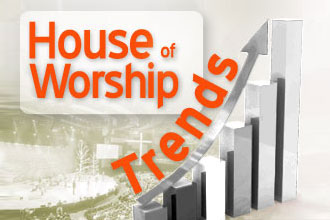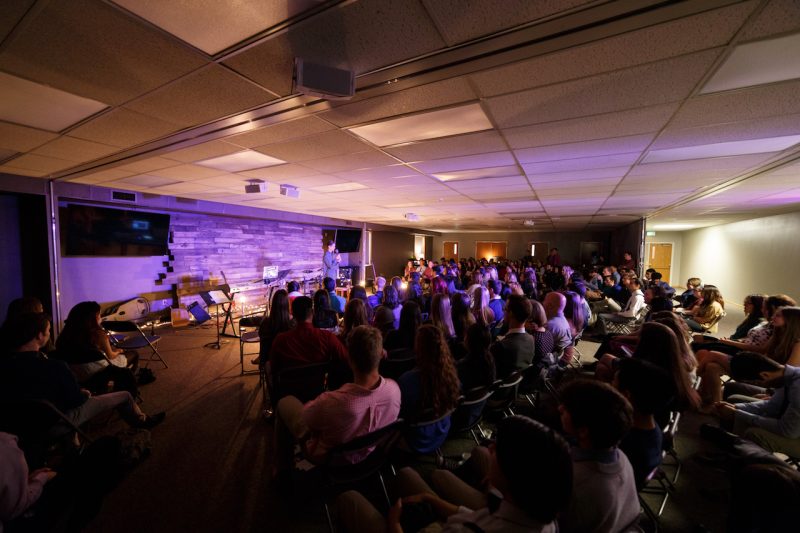Self-Calculating R.O.I.
 Early on in my career as a consultant, after years of my own experience on staff in three mega churches and then in the design/build side of the A/V/L industry, I found myself re-designing technology systems sold to churches. Quite often, the technology in place wasn’t the right application for the gear, whether that meant a disproportionate amount of technology (over-sold) or missing technology components (under-sold/bid work). The biggest pain point was the lack of trust and confidence the church leadership had in employing technology — after all, if they spent this much already, how was additional/replaced technology going to be any different?
Early on in my career as a consultant, after years of my own experience on staff in three mega churches and then in the design/build side of the A/V/L industry, I found myself re-designing technology systems sold to churches. Quite often, the technology in place wasn’t the right application for the gear, whether that meant a disproportionate amount of technology (over-sold) or missing technology components (under-sold/bid work). The biggest pain point was the lack of trust and confidence the church leadership had in employing technology — after all, if they spent this much already, how was additional/replaced technology going to be any different?
This led to the typical knee-jerk reaction where appropriate funds were withheld initially from solving the problem for fear of throwing good money after bad. What they needed was restored confidence. What I needed was a more objective way to demonstrate a better return on investment (R.O.I.) and the amortization of costs over the lifespan of the project and/or technology.
Price vs. Value
Don’t skip this paragraph. You need to hear this because today’s continued focus on marketing of A/V/L technology on the features and benefits is proving the law of the Internet — cheaper, better, faster as the goal. The entire industry would do well to take a huge dose of common sense and realize that when you keep doing what you’re doing, you keep getting what you’re getting. Sure, R&D is helping make your products better, but where’s the R&D into your product and service positioning per vertical market? When you start with establishing the priority of price, you lower the value of your brand.
You have to start by stating the truth and painting a clear picture of true R.O.I. — technology is a black hole for money. Too many church leaders are led to believe that spending “enough” is the key to getting great results from their technology. What you — manufacturers, integrators, dealers, consultants – should be telling them is that spending the right amount up front is only as important as spending money on service, maintenance, training, education, updates, upgrades and replacing expendables. It’s OK to honestly talk about the ongoing expense of technology — it never really ends — because it’s a reality they need to know about and plan for well before the invoice is submitted.
When you speak only/primarily to the price, you’re talking about the short-term. When you speak to the value, you’re addressing the long run and helping the church to determine their investment threshold and commitment to leveraging technology. Don’t be afraid of this reality, because it will eventually (and sometimes immediately) lead to the trust-equity you’re trying to build. Think this through and you’ll see the picture this paints for your sales into the house of worship market — long term, loyal clients that have the chance to become great referrals.
Amortize It!
It will take some research and analysis on your part with existing clients, but it’s important to understand how churches are using your technology and how long they ‘make it last’ before replacing it.
This tells you a few important things.
First, it gives you a deeper understanding of how varying levels of technology are utilized and repurposed. Quite often, you’ll find that the gear fails before they would ever stop using it, as they’re great at finding ways to repurpose technology again and again as they make new upgrades and purchases.
Second, it provides a reference point for when and how to introduce upgrades and replacement of technology. No one expects a particular console to last forever, so help the church understand the usable lifespan of your technology so that they can amortize the initial cost out over the lifespan of that product, in not only years, but in the number of services it will likely handle before it’s time to upgrade it. Considering the huge number of churches with multiple services (and even multiple venues and campuses), it’s not unreasonable for a church to have over 250 services/special events in their venues per year — and some with many more than that!
You’ll also help them see how they can “pass down” today’s technology to either other ministries (such as youth) or even other churches. The value of repurposed equipment can also be a factor in helping to establish a realistic amortization schedule.
Think of it this way: a $50,000 product that can fit an environment for five years (at five services/events per week) before an upgrade is necessary would, amortized, costs $40 per service. Forty bucks! Pretty much every church would pay $40 per service to have the right technology in place to meet their current and foreseeable future needs!
Making R.O.I. Self-Calculating
It’s obvious that providing a cost estimator tool on your website/in the hands of your sales team that allows the church to add in variables such as minimum and maximum (based on preset values) years of expected operation and the number of times per week/month/year the gear will be used is a simple way to help the church self-realize the R.O.I. of a purchase.
But why stop there? Extend the life of a product with a service contract and include expendables (some amount per year) as part of the initial purchase (again, with amortization tools) to provide them with both a better understanding of up front costs and the costs associated with ownership.
Lest you think I’ve shifted my original position on making value more important than price, here’s how this all comes together: the price is what something is after you’ve determined the value you can get that meets your immediate and long term needs. You can help the buyer arrive at the price by making the value (and calculating the true R.O.I.) the initial — and most important — part of the conversation.
Ideally, it’d be great to have not only a way to register a new product online, but to also help the client keep up with maintenance reminders, software/firmware updates, replacement parts and their total cost of ownership over the life of a product. By the way, this would help the church immensely when purchasing insurance, as these amortization tables will likely help them to get a better rate from their insurer.
Selling to the church market has some complexities, but the week-in, week-out consistency of their technology operation also makes churches more predictable when it comes to selling and promoting your value proposition.
How is your firm helping church clients see the long-term value of your products and services?





